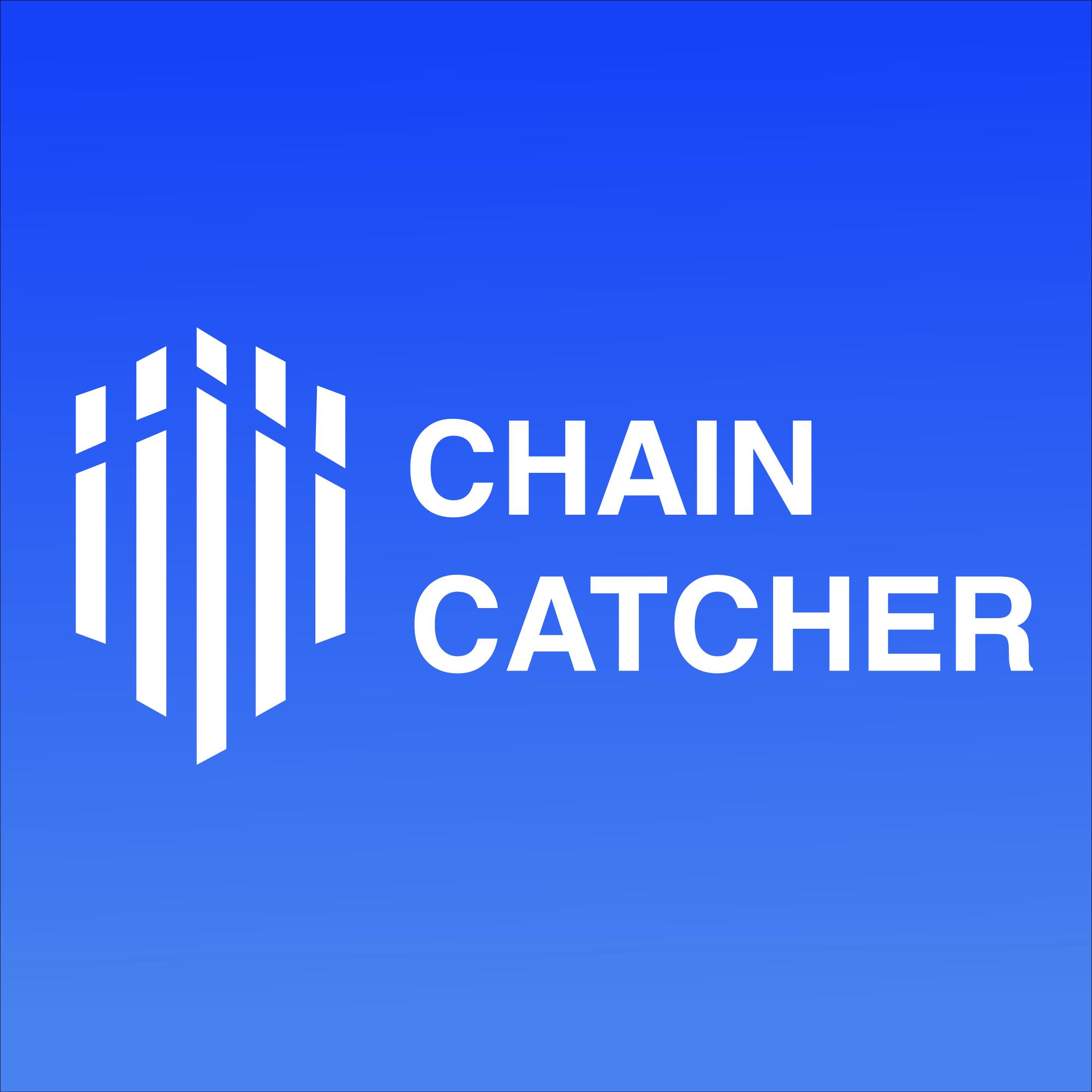Dragonfly Releases 2023 Crypto Industry Compensation Report: Multiple Compensation Payment Methods Including Equity, Tokens, and Stablecoins
Original Authors: Zack Skelly, Chris Ahsing, Dragonfly
Original Compilation: Meteor, ChainCatcher
Editor's Note: The cryptocurrency industry is developing rapidly, but compensation seems to remain a mystery for most users, largely due to the complex financial attributes of the crypto industry. Compensation is not just about individual salaries; it also includes various forms such as token rewards and equity incentives. Dragonfly has compiled the 2023 Crypto Compensation Report, based on data from 49 crypto companies, with statistical dimensions including salary, equity and token compensation ranges, founder salaries, cost of living (COL) adjusted salaries, payment methods, token issuance, and equity/token calculation methods.
A clearer compensation report can help more people develop an interest in Web3 and indirectly showcase the competitive landscape and development direction of the crypto field. ChainCatcher has organized and compiled the report as follows (the original text is divided into 9 sections, organized into 8 sections):
U.S. Companies Offer Higher Compensation Than International (Non-U.S.) Companies
Compared to international companies, U.S. companies offer higher compensation for nearly all positions and experience levels. On average, U.S. company salaries are 13% higher, and equity and token compensation has increased by 30%.
Compared to other positions, the equity and token compensation for product designers at international companies aligns more closely with that of U.S. companies;
The equity compensation for product manager positions at international companies is generally higher than for all other positions;
Compared to U.S. companies, international companies offer higher compensation and equity for GTM positions at the executive/director level;
In Seed and Series A Funded Companies, U.S. Founders Have Slightly Higher Salaries and More Equity/Token Ownership

As companies go through more rounds of funding, as shown in the above chart, founder salaries increase while equity/token ownership decreases, likely due to equity dilution. Most founders report Series B compensation below the median.
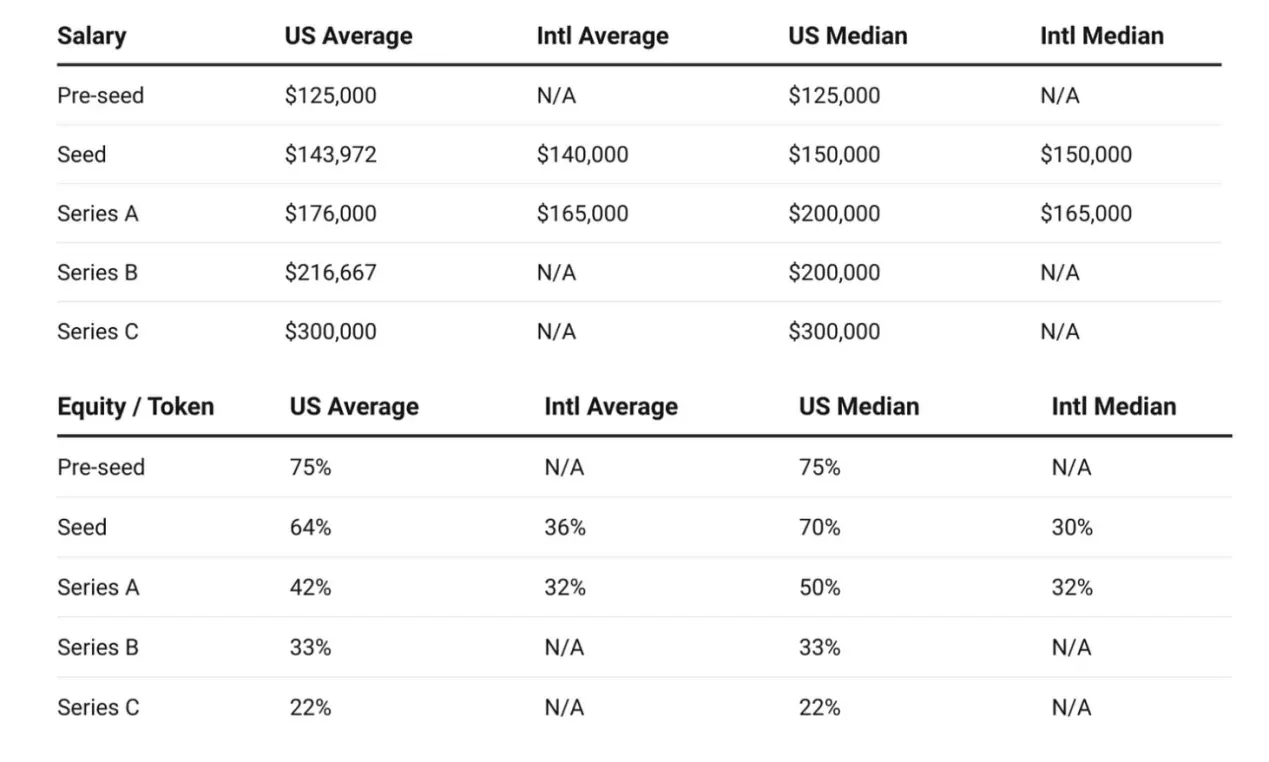
Due to a lack of data on international companies in the Pre-seed, Series B, and Series C stages, it is difficult to compare founders from U.S. and international companies. However, compared to the seed and Series A funding stages, U.S. founders generally have slightly higher salaries but greater ownership, especially during the seed stage.
Most Companies Do Not Adjust Salaries Based on Cost of Living (COL), but This Is Improving as Companies Grow
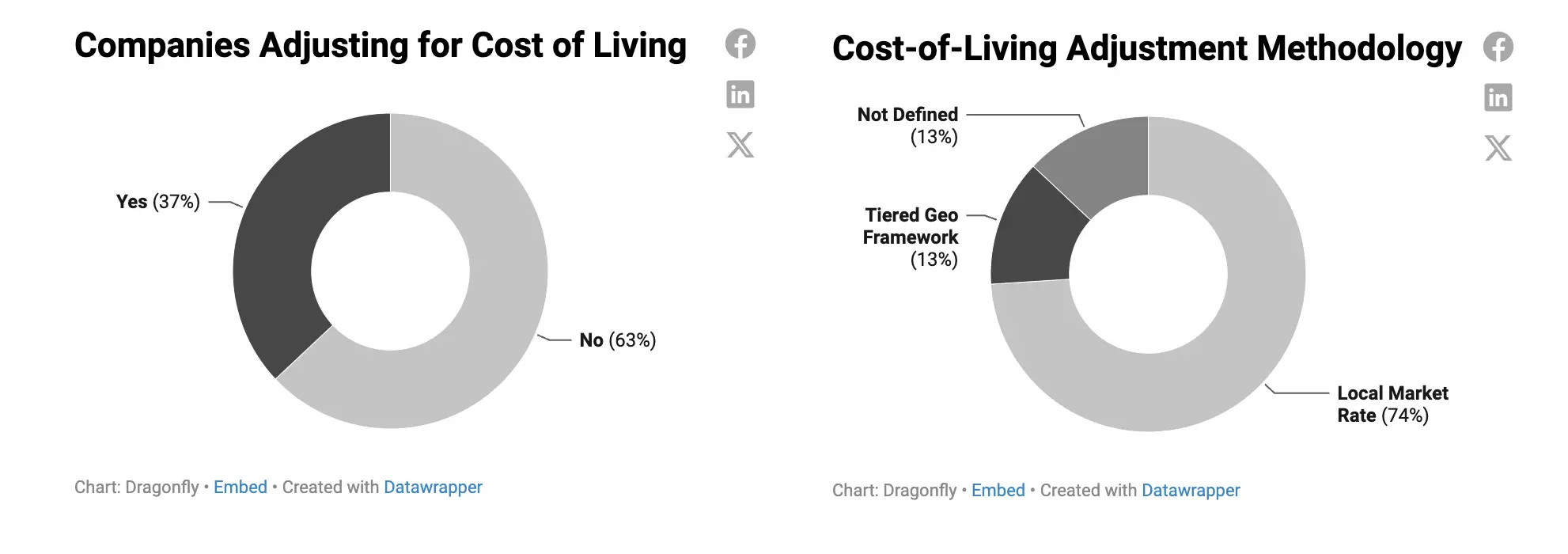
Most companies do not adjust salaries based on the cost of living. However, as companies grow, the likelihood of adjusting salaries based on COL is increasing.
Currently, companies adjust salaries in two ways: one is based on local market prices, which is quite popular; the other is within a tiered geographical framework. Companies start with salary benchmarks from specific (usually competitive) regions and adjust each person's salary by a certain percentage based on geographical tiers (mainly determined by the radius of major urban areas), aiming to balance internal pay equity with external competitiveness.
For fairness regarding the overall purchasing power in different regions of the world, teams may also decide not to adjust for COL; for companies that do not make adjustments, employee salaries are typically related to the value they create for the business, rewarding more work with more pay, giving these companies a competitive advantage in hiring speed and talent attraction.
However, this situation is also improving, and it is expected that we will see more solutions in the future, such as companies shifting from cost of living adjustments to labor cost adjustments. Cost of living adjustments are based on the rates in the area, while labor cost adjustments are based on job demand in the area. Currently, there is not enough industry data for labor cost adjustments (especially in the crypto field, where many areas lack job demand), but many compensation experts and data providers are considering this model.
U.S. companies that only hire domestically are unlikely to adjust based on COL, while U.S. companies hiring internationally are split, with half making adjustments and half not. All international companies hire employees outside the U.S., and most do not adjust salaries based on COL.
Companies in later funding stages often reduce hiring outside the U.S. However, most respondents in this analysis are from the U.S.
In Most Cases, Companies Pay Employees in Fiat Currency. International Companies Lead in Cryptocurrency Payments

In most cases, companies use fiat currency for payments. International companies are leading in crypto payments (such as USDC), while U.S.-based companies are more likely to use crypto contractors rather than paying employees directly.
Most companies typically use crypto for international payments to simplify cross-border transactions, mitigate exchange rate fluctuations, and/or take advantage of certain jurisdictions' tax considerations. This method is also useful for teams with employees in areas with limited banking infrastructure or where privacy is needed, such as companies with anonymous contributors.
As crypto regulations and the legal distinctions between paid employees and contractors evolve, global payroll providers (such as Liquifi) are simplifying the adoption process by incorporating compliance into their services and supporting crypto transactions locally.
International Companies Are More Likely to Issue Tokens
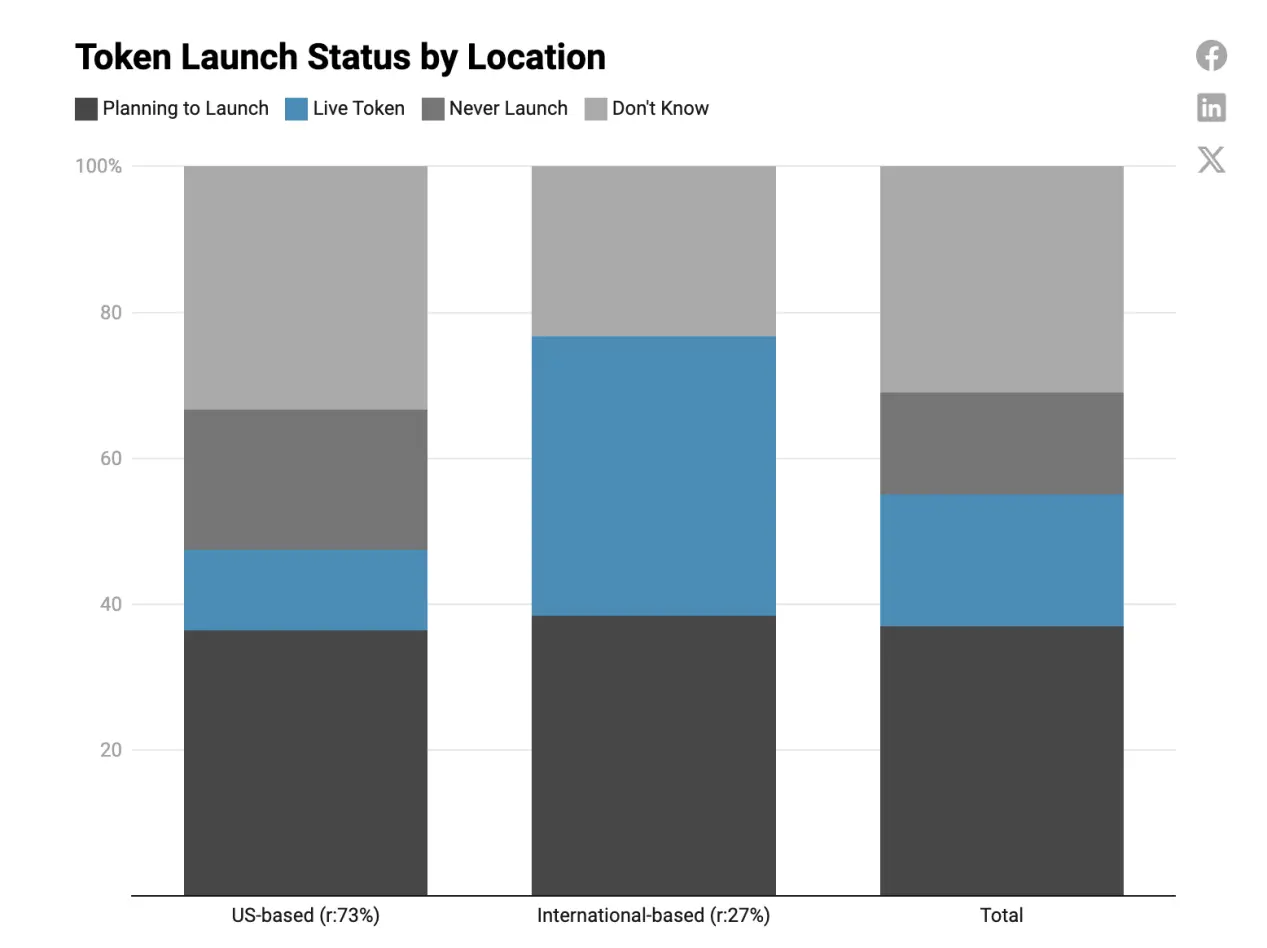
International companies are more likely to issue tokens, with a higher proportion already having tokens or planning to issue them. U.S.-based companies (or due to the regulatory environment) have more teams choosing not to issue tokens at all.
Infrastructure Companies Are Most Likely to Issue Tokens
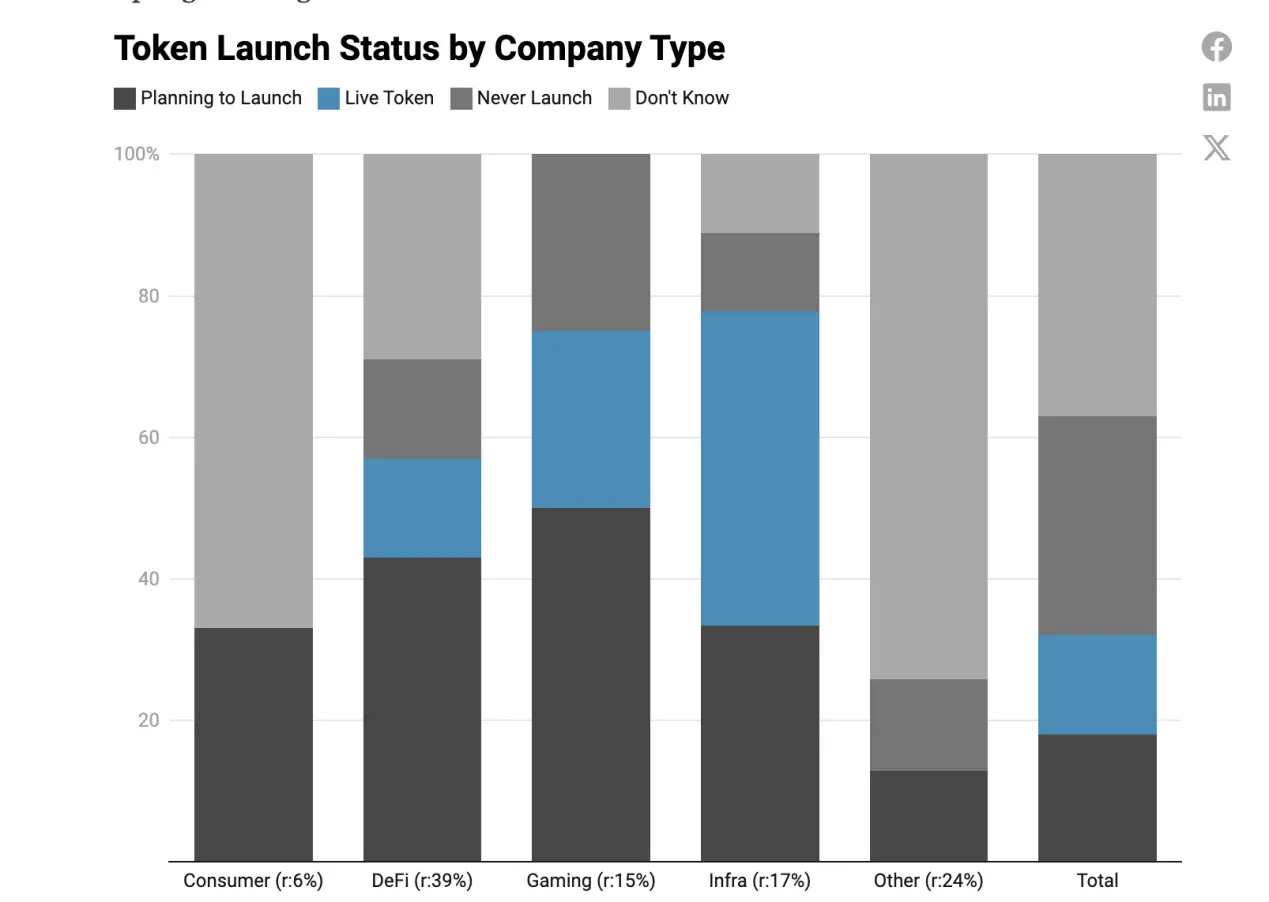
Overall, infrastructure companies lead in token adoption, with over three-quarters of companies having or planning to issue tokens. These companies may use tokens as a base currency (especially L1 and L2). Gaming companies also issue tokens, as in-game native tokens are becoming increasingly important for in-game assets, tokens, rewards, incentives, and governance. The DeFi sector also issues tokens, which are an integral part of its governance, staking, and reward models. Consumer-focused companies often integrate tokens into more traditional business models, while "other" category companies have significant uncertainty.
Although data indicates that as companies grow in funding size, stage, and company size, they are more likely to plan and launch tokens, these factors are not the primary reasons for issuing tokens.
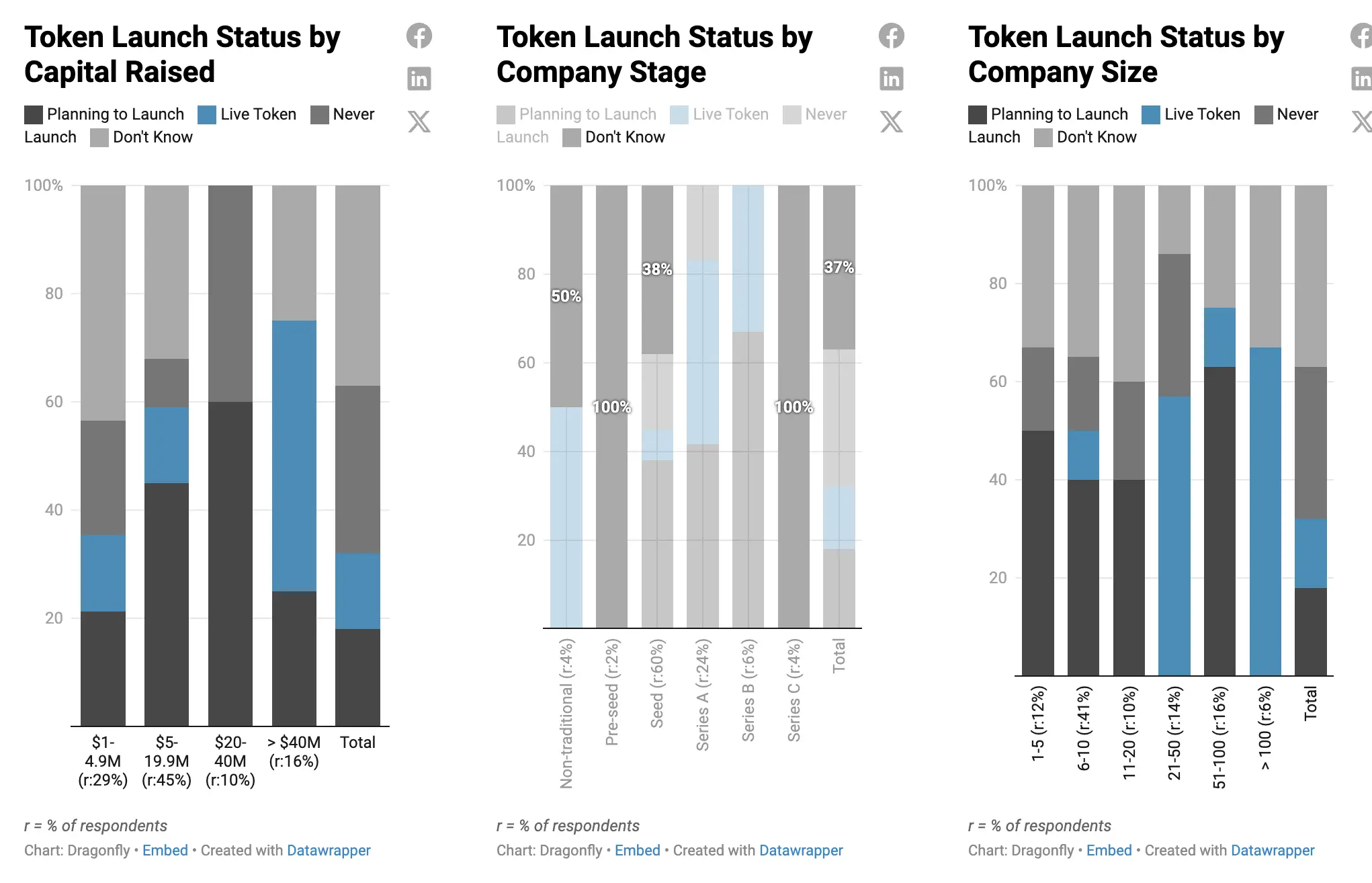
Small startups, especially those in the seed stage with funding between $1.9 million and $4.9 million, are very interested in tokenization, but few companies will issue tokens this early. As companies increase their employee count and secure more funding, there is a noticeable plan to issue tokens in Series A and B.
Companies with funding between $20 million and $40 million are an exception, as they have plans to issue tokens, but none have issued tokens yet.
For larger companies with funding over $40 million and more than 100 employees, the proportion of those issuing tokens is much higher. By the time they reach Series C funding, there is usually a clear plan to issue tokens and consider how tokens can apply to already mature products or consider using tokens in new projects/ventures.
75% of companies with funding exceeding $40 million (the highest funding level reported) focus on infrastructure development, which inherently requires significant capital and often integrates tokens into their products.
Nearly Half of Companies Only Pay in Equity
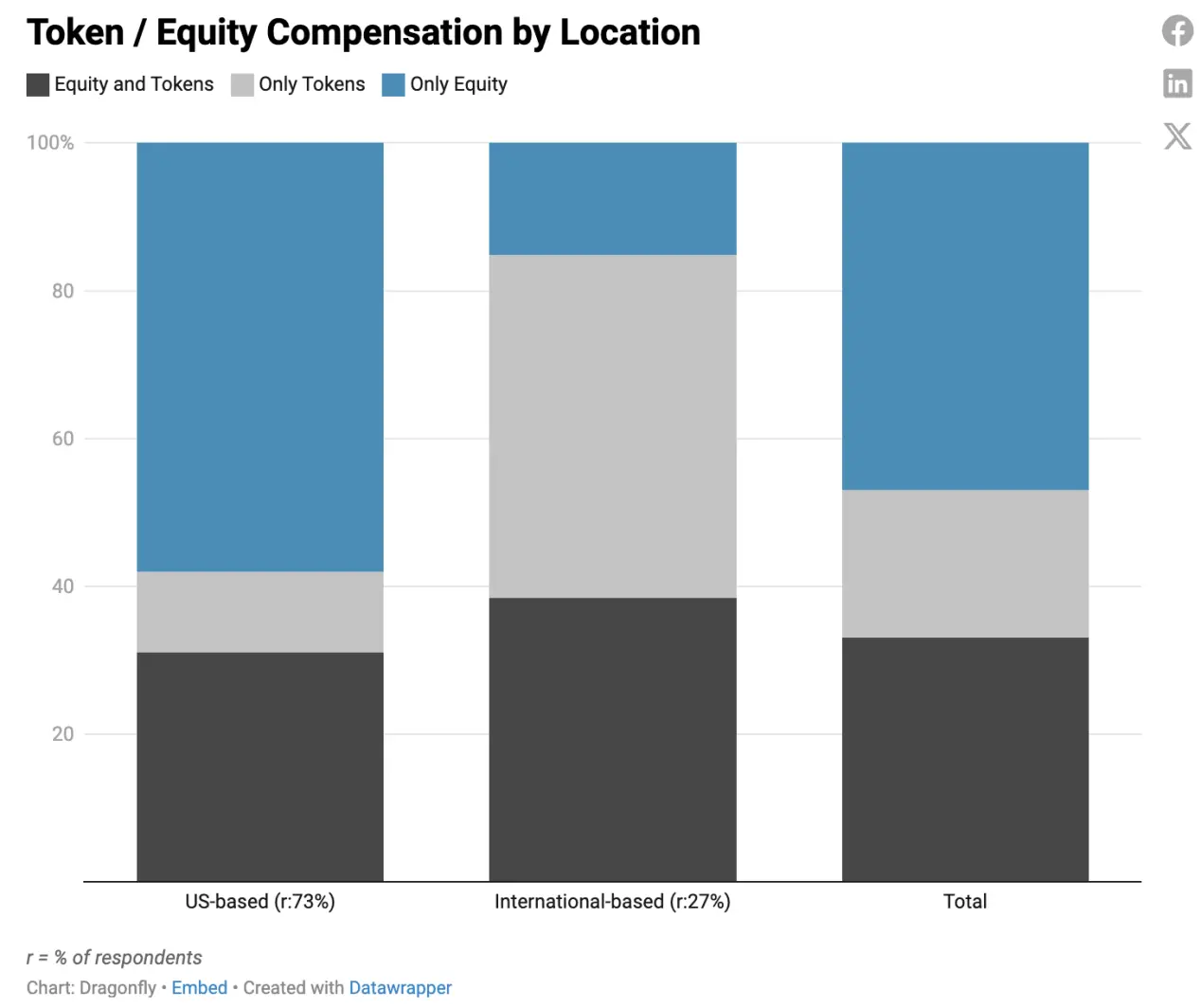
Companies typically offer compensation in the form of equity, tokens, or some combination of both. When planning compensation or evaluating offers, it is crucial for founders and employees to consider how and where the company accumulates value, whether through tokens or equity.
Nearly half of the companies only pay in equity. However, most companies that indicate they may launch tokens in the future only provide equity, while all projects currently holding tokens offer them as part of compensation.
A certain proportion of U.S. and international companies offer a combination of equity and tokens as compensation; their preferences differ: more U.S. companies only provide equity, while more international companies only provide tokens (overall, international companies seem to lean more towards tokens).
Many reports indicate that over time, fewer companies are offering token bonuses.
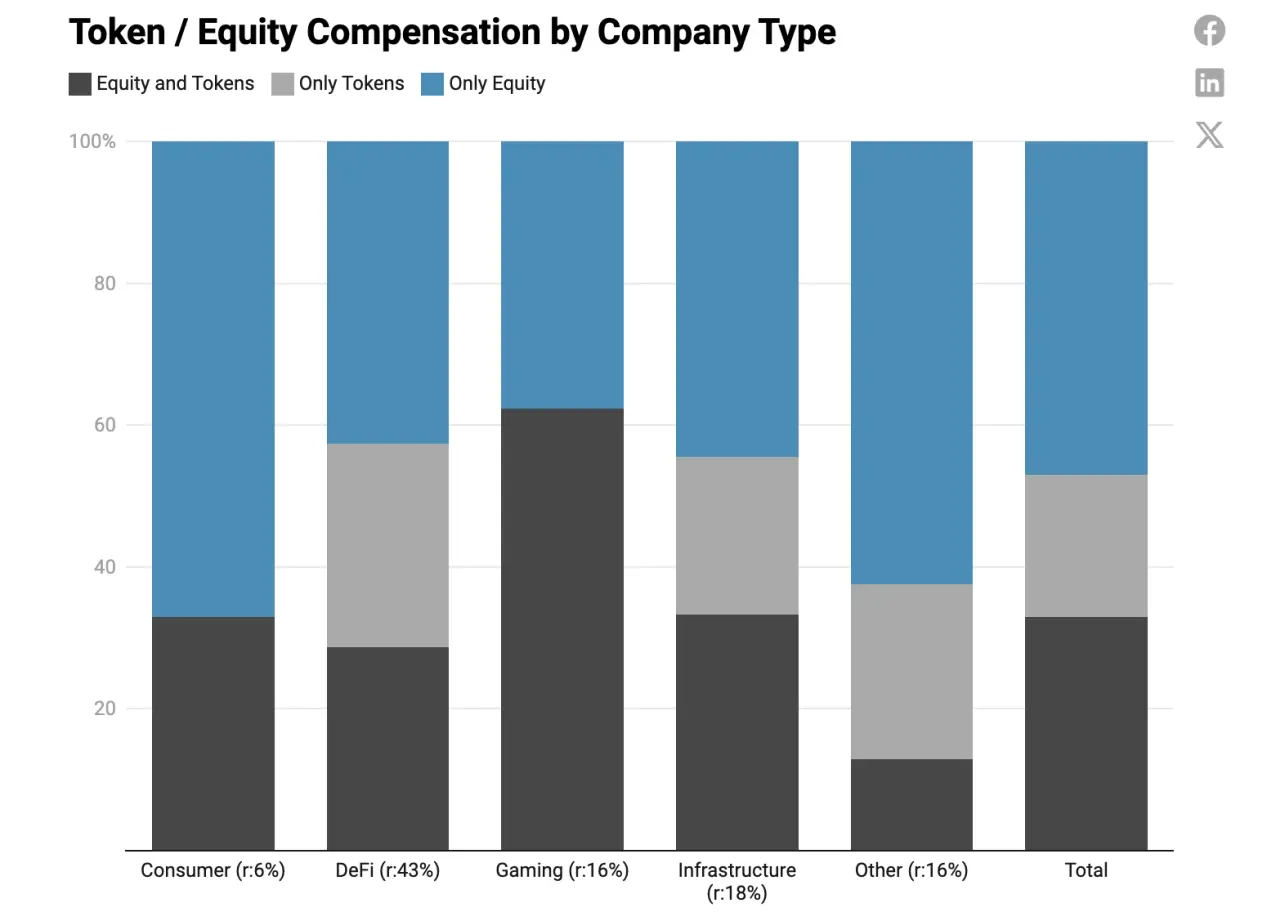
Although infrastructure companies are most likely to have or plan to issue tokens, most infrastructure companies only issue equity rather than solely tokens or a combination of both.
The DeFi sector follows a similar trend, but its compensation model is more balanced.
Gaming companies show a strong preference for offering both equity and tokens, notably, no gaming companies only offer tokens.
All consumer and "other" companies are either uncertain about issuing tokens or ultimately do not plan to issue tokens, so most companies only offer equity.
When considering funding, company stage, and company size, early-stage startups heavily utilize equity, and as companies continue to raise more substantial seed funding, their compensation strategies become more diverse.
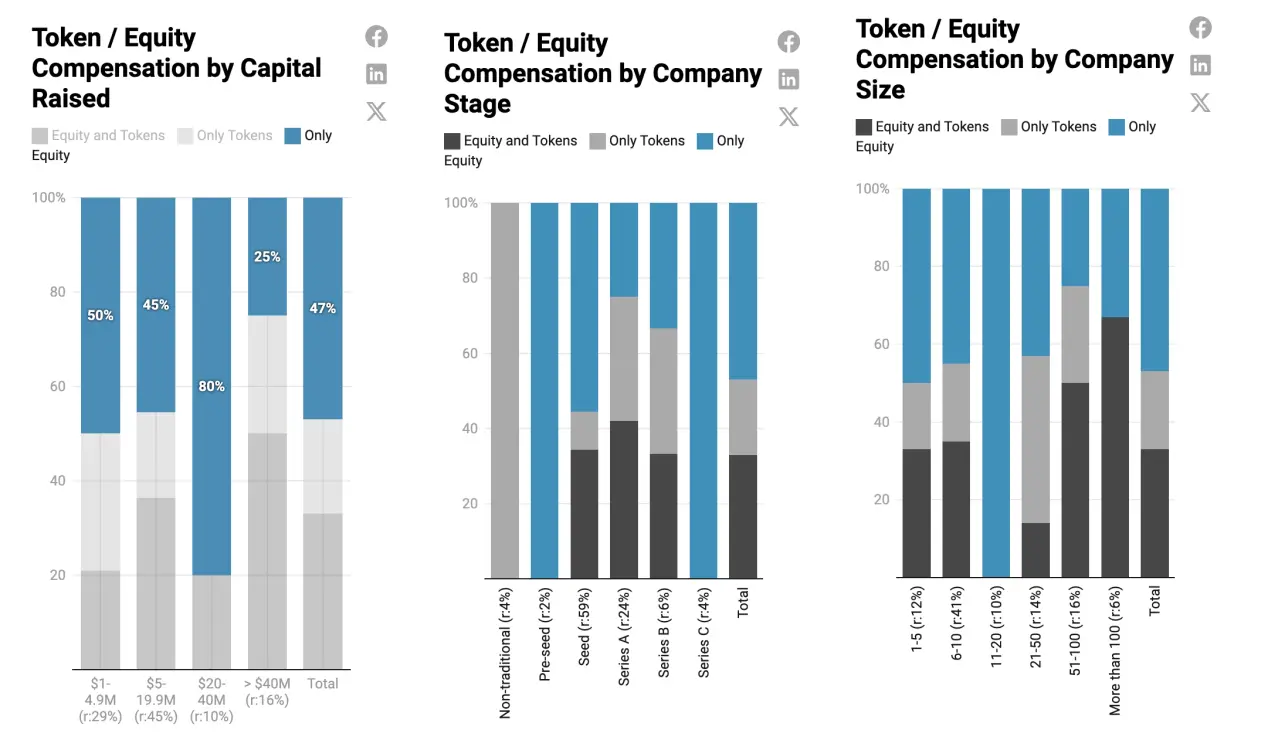
In the Pre-seed stage, we see companies only offering equity (all surveyed Pre-seed companies have not yet determined whether to launch tokens).
A few companies that raised seed funding between $1.9 million and $4.9 million still primarily offer equity.
Companies with funding between $5 million and $19.9 million are typically still in the seed stage with more than 10 employees. An increasing number of such companies are beginning to offer token compensation and are starting to more frequently provide a mix of equity and token compensation. Additionally, as the number of employees increases, companies are generally more likely to offer both equity and tokens simultaneously.
Most Companies Use the "Token Percentage" Method to Calculate Token Value, More Companies in Later Funding Stages Use Fair Market Value (FMV) Methods
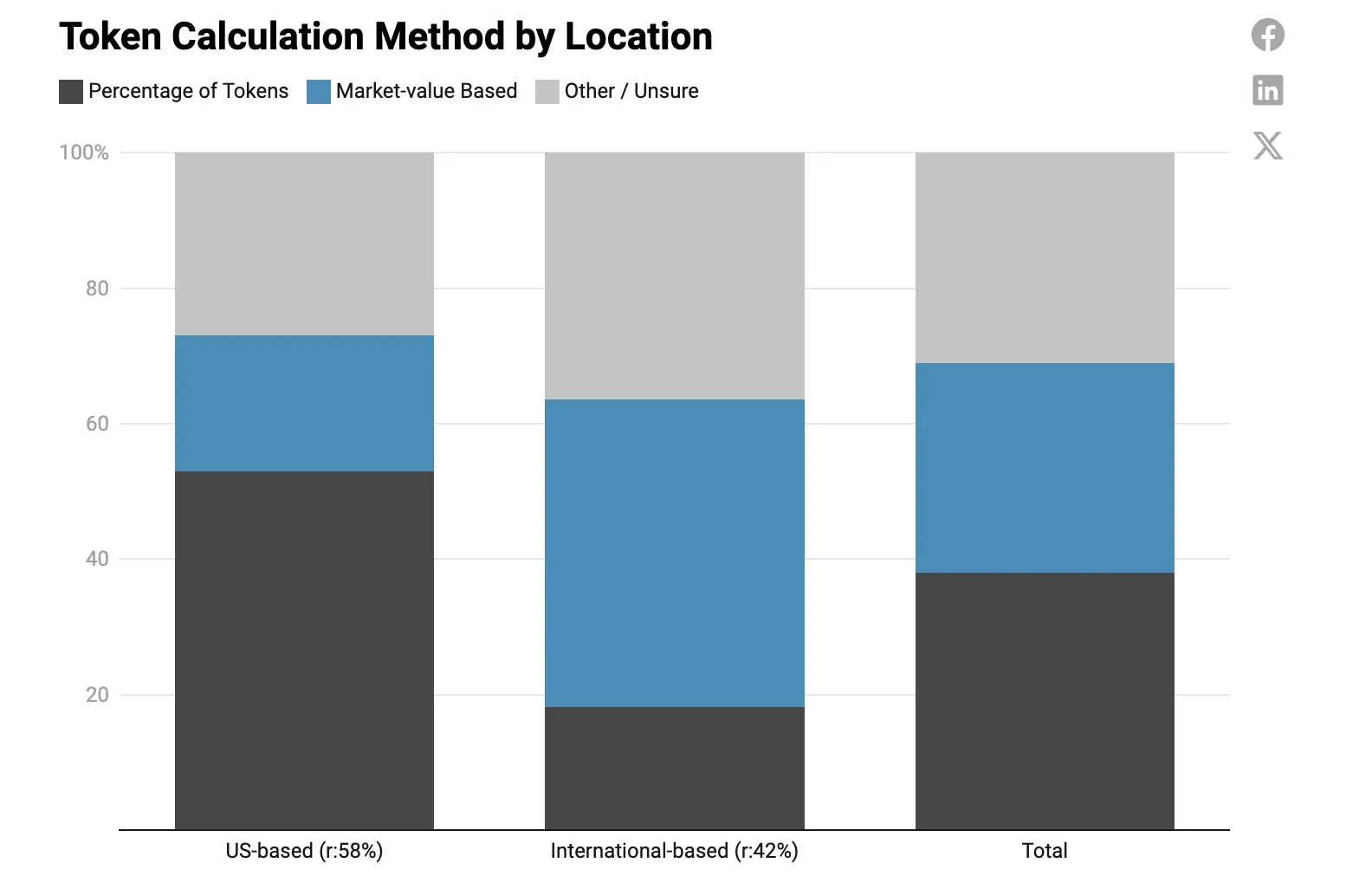
Currently, most teams prefer and commonly use the method: teams with tokens adopt the Fair Market Value (FMV) method, first determining the total dollar value to be provided to employees. Then, based on calculations, the fair market price at the time of granting or vesting is used to calculate the number of tokens to be granted, but this method lacks stability due to token volatility.
For teams without tokens, the most common approach is to provide future tokens based on equity allocation ratios. Another method is to calculate the fully diluted value of the tokens, which is determined by the venture capital firm that receives future token equity. Given that the token price from venture capital is fixed, this provides a fair basis for compensation until the tokens are publicly issued.
The token percentage method attempts to simulate how traditional startups calculate equity-based rewards. This method considers market fluctuations and mitigates employee pay inequality while minimizing unnecessary token dilution and protecting employees' fair compensation rights.
An effective token percentage method can adopt the same approach as equity and adjust based on token-specific volatility, ultimately granting a percentage of a fixed token pool.
Currently, most companies adopt a market value-based compensation method, with U.S. companies more inclined to use the "token percentage" compensation method.
"Other" methods may include annual bonuses, performance-based bonus structures, floating ratios between equity and tokens, and others.
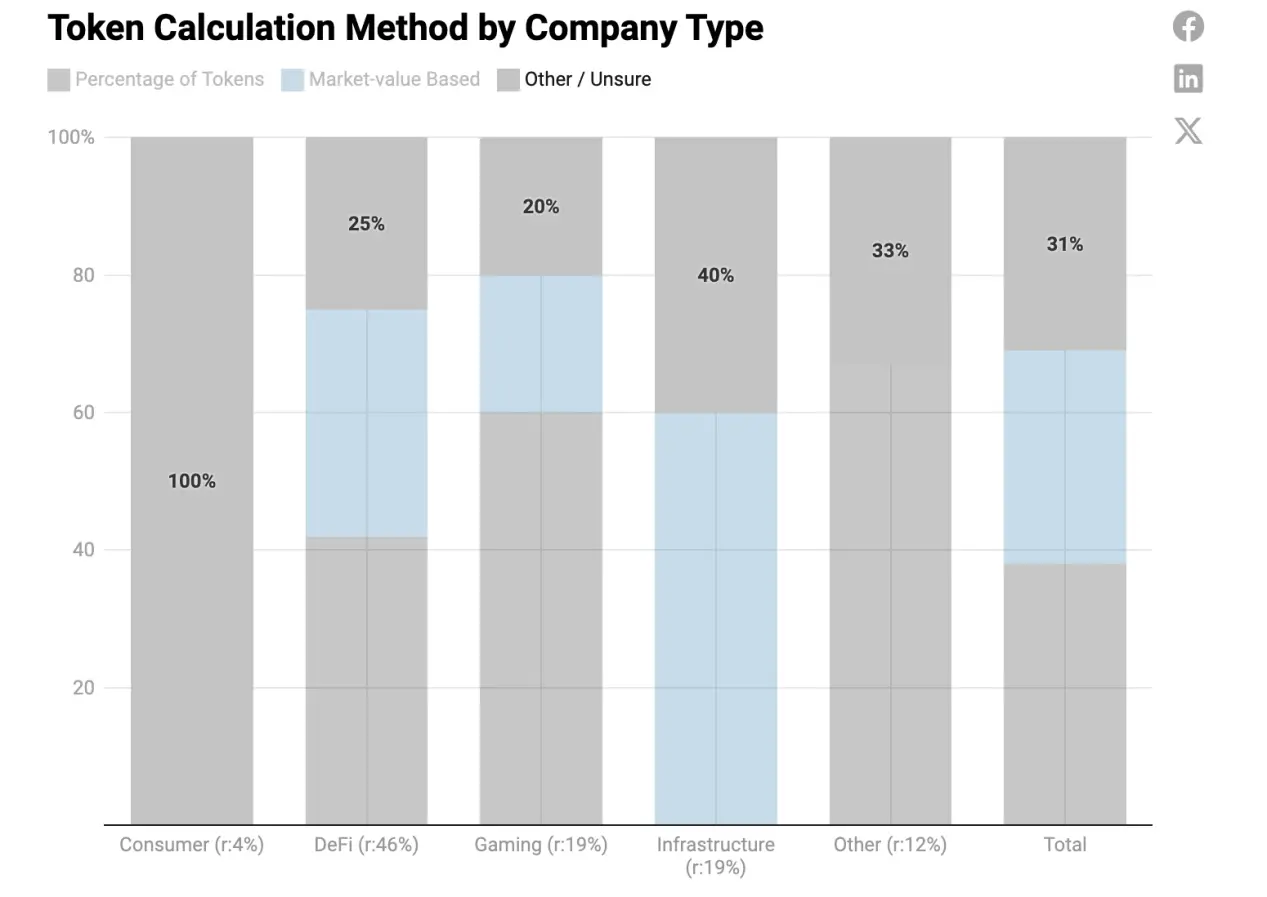
Gaming and "other" companies are more likely to use the "token percentage" method, while infrastructure companies are more inclined to use market value-based methods.
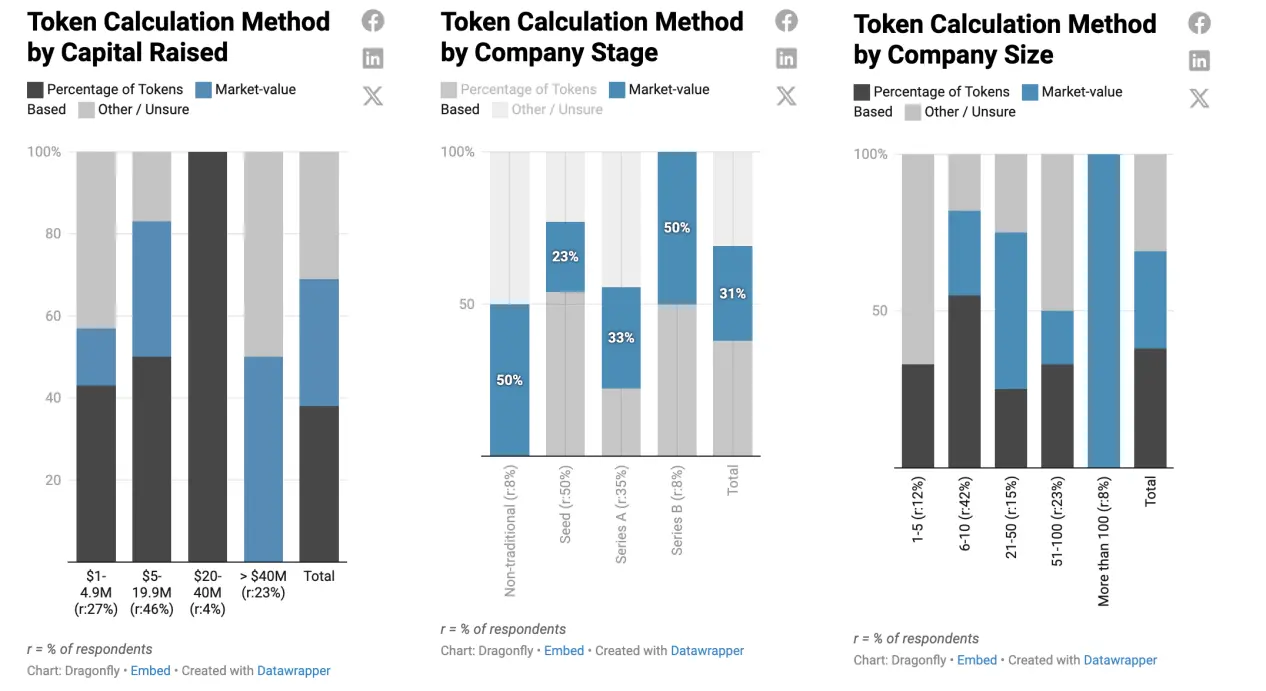
More companies in later funding stages adopt market value-based methods as they raise more funds. Seed-stage companies and those with funding not exceeding $40 million primarily use the token percentage method. From Series A onwards, market value-based calculations become more popular, especially among companies with 21-50 employees, and are more common in Series B and companies with over 100 employees. Companies with funding exceeding $40 million tend to use a balanced combination of market value-based calculations and other less defined methods.
Finally, this analysis report is based on the findings from a survey of 49 portfolio companies conducted in 2023. Based on existing data and reflecting trends rather than definitive industry standards, this report is indicative rather than conclusive.
We hope this report clearly presents industry trends, allowing anyone setting, negotiating, or trying to understand compensation—whether they are hiring teams, job seekers, or industry observers—to gain insights.




